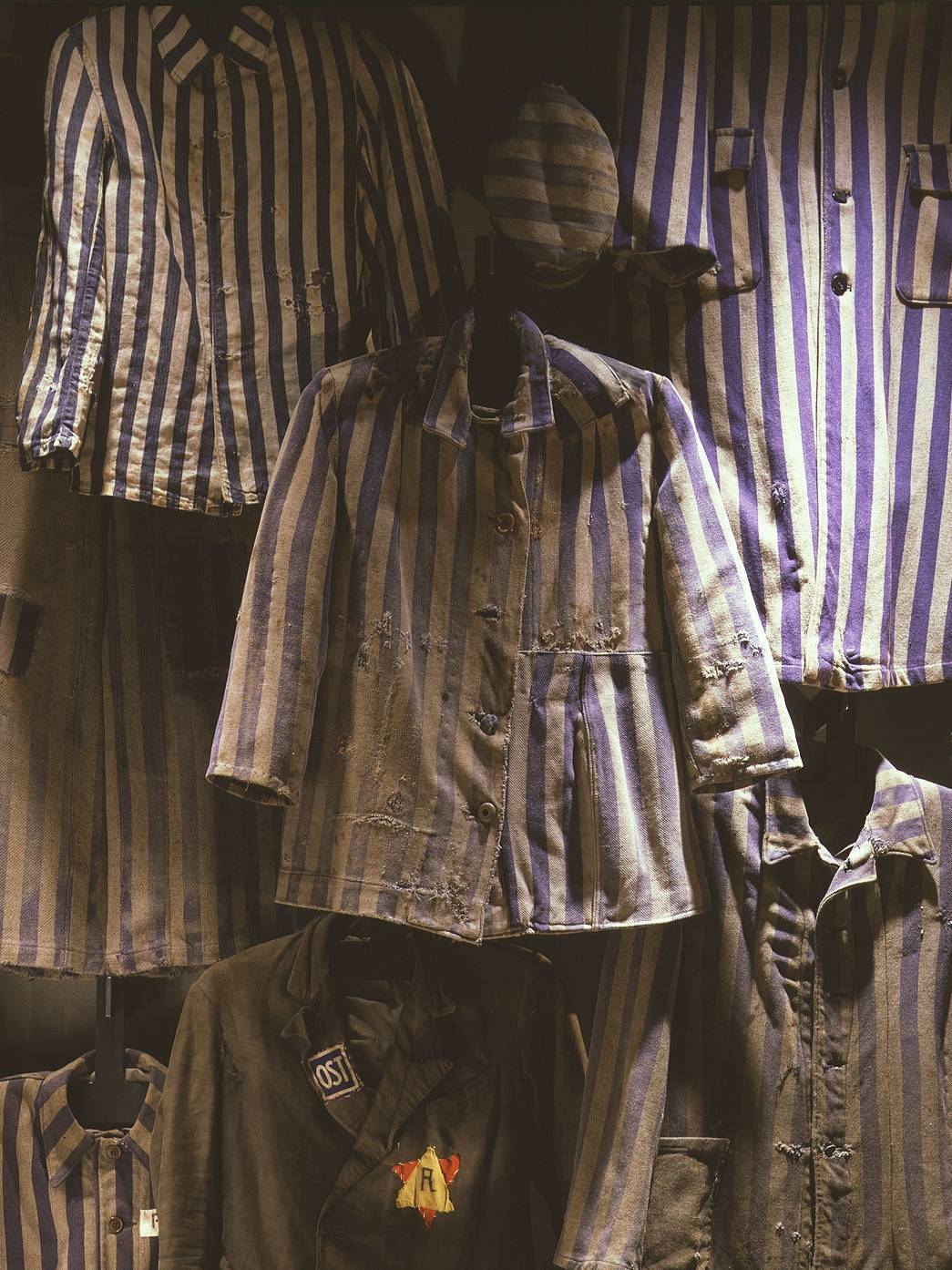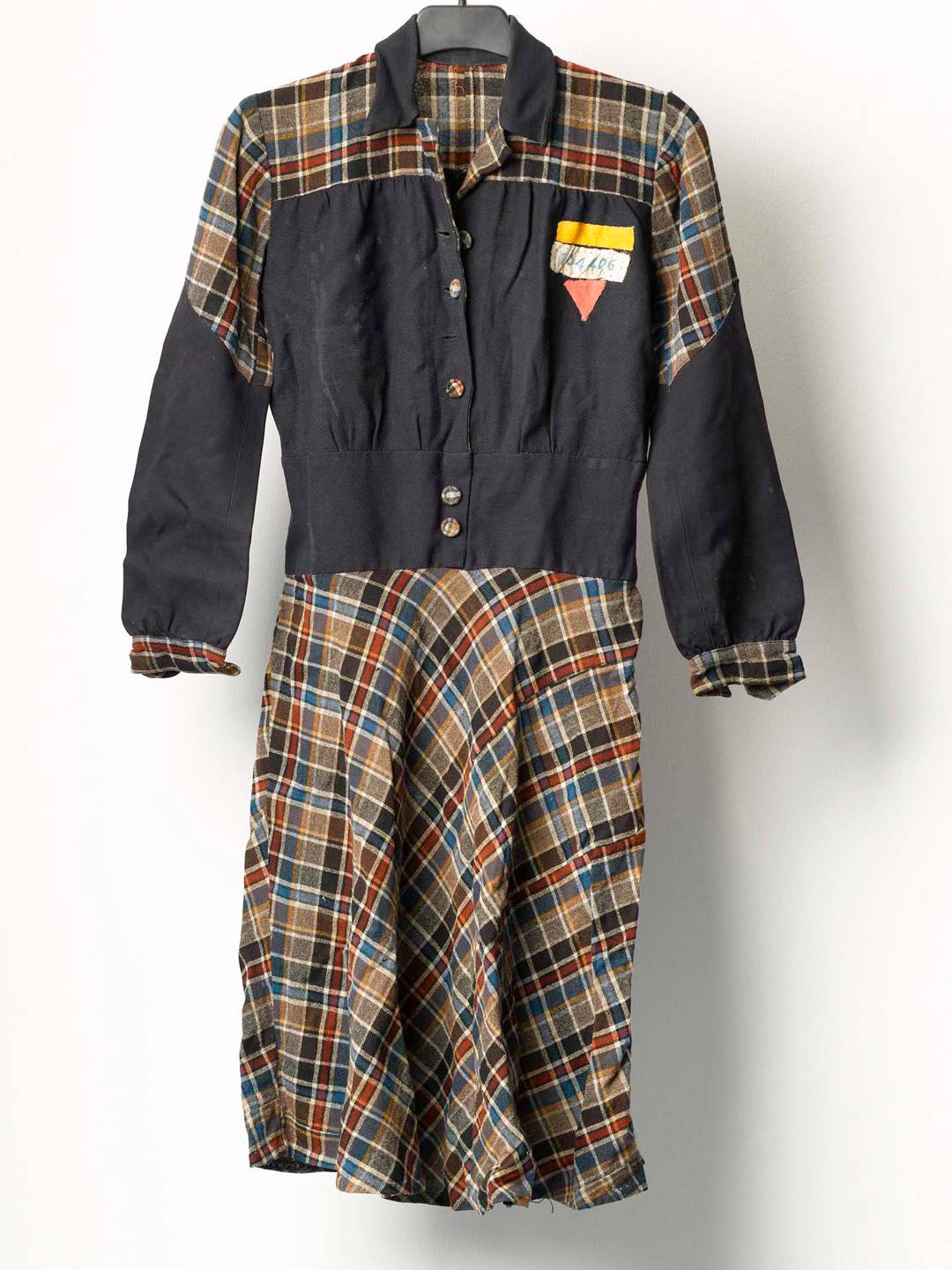Clothing
The clothing that was provided to a concentration camp prisoner encompassed a set of black-white stripped summer clothing and blue-grey stripped winter clothing: Underwear, a shirt, trousers, jacket and a coat. The sets were often incomplete and did not include spare clothing. Until 1942, there was no specific clothing for women.
On that morning, three corpses had to be brought out. They lay in front of the barracks, skeletons in striped uniforms. I was surprised that nobody took the clothes from them. With these steadily decreasing temperatures, each piece of fabric could save your life. But I soon realised why nobody was interested in these uniforms: They were teeming with lice.
– Solly Ganor about the lack of supply of clothing
The distinct, striped pattern of clothing for concentration camp prisoners was introduced as a uniform to identify prisoners and make escape more difficult. Previously, prisoners wore marked civilian clothing or discarded uniforms.
We received our clothing in Auschwitz. I received my shirt on 03/10/1944 and wore it until my release. I was never given another shirt, there was no way of washing or accessing hot water.
– Dr. Norbert Fried about hygienic conditions
In order to save costs, from 1939 the SS company “Deutsche Gesellschaft für Textil- und Lederverwertung mbh” (in short: Textled), took over the production. During the years 1940/41, 73,000 shirts, 28,500 trousers, 25,000 jackets and 20,000 prisoners’ coats, among other things, were produced at the Ravensbrück concentration camp prisoner tailoring that had been taken over by Texled.
A shirt, gaiters, then we had trousers, a jacket and we 600 Jews from Czechoslovakia, who all arrived together, had so-called civilian jackets. They were the clothes of Jews who had been killed at Auschwitz. As prisoners there, we were brandished with large letters on our backs, with crosses, with numbers and red signs.
– Dr. Norbert Fried about clothing
During the Second World War, materials and capacities became scarce, so that as early as 1942 the move was made to provide prisoners with marked civilian clothing from people killed in concentration camps. Although this was only to be worn inside the main camp, the marked civilian clothing was also used in the concentration subcamps due to a lack of striped clothing, however.
We were entirely ill-equipped for the cold. My shoes were completely ripped and the soles were almost inexistent. I bound them together with wire to keep them on my feet. Our canvass was stiff with mud, and we had neither socks nor underwear. The situation became increasingly unbearable.
– Jakob Bresler about the lack of supply of clothing



